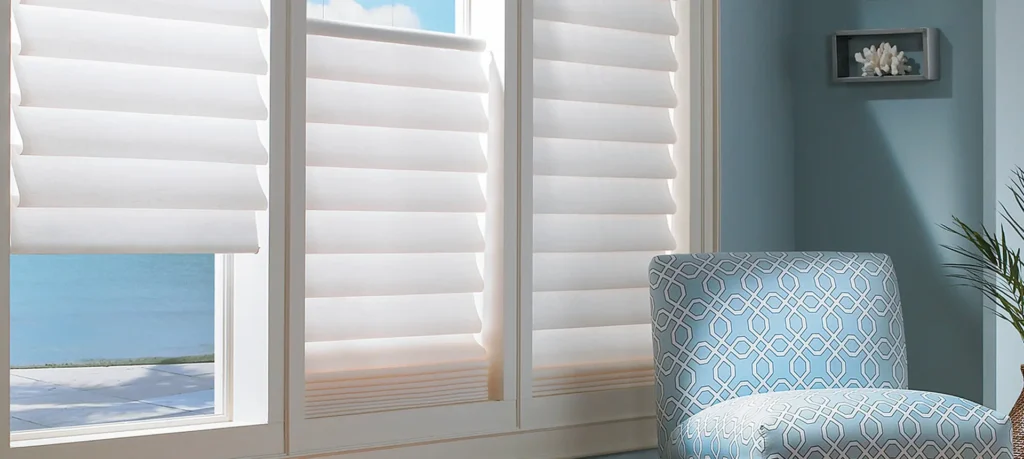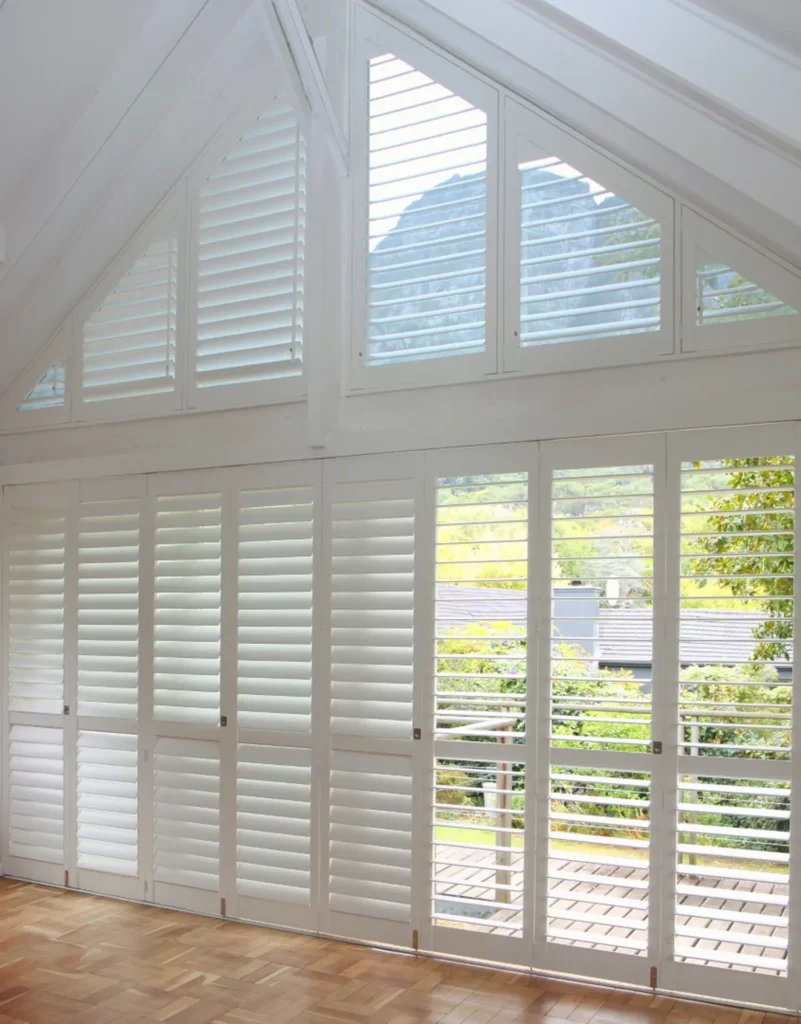Choosing the right window treatments can completely transform the look and feel of your home—not to mention improve comfort, privacy, and energy efficiency. Blinds and shutters are two of the most popular options, each offering unique benefits depending on your style, budget, and needs. In this blog, we’ll break down the differences between blinds vs. shutters so you can find the perfect fit for every room in your home.
A Quick Overview: Blinds vs. Shutters

Blinds are window coverings made of slats that can be tilted open or closed. They come in many styles, like vertical or horizontal, and materials such as wood, faux wood, aluminum, or vinyl—offering flexible light control and a sleek, minimal look.
Shutters, on the other hand, are built-in window treatments that add structure and timeless charm to your space. Styles like plantation, café, or full-height shutters feature solid louvers and are often made from wood or composite materials.
The biggest difference? Blinds hang inside or outside the window frame, while shutters are mounted securely into it, giving a more permanent, polished look. Both have their benefits—it just depends on your style, needs, and budget!
Style and Aesthetic Appeal
When it comes to style, both blinds and shutters bring something unique to your home. Blinds are incredibly versatile—they can easily blend into modern, minimalist, or casual spaces without stealing the spotlight. With a wide range of colors, materials, and slat sizes, they’re a go-to for simple, clean lines that work with nearly any décor.
Shutters, on the other hand, make more of a statement. They add architectural character, timeless charm, and a touch of elegance that can instantly elevate a room. They’re especially popular in traditional, farmhouse, or coastal interiors.
If resale value is a factor, shutters often have the edge. Because they’re considered a permanent fixture, buyers tend to see them as a premium feature—boosting both style and home value.
Light and Privacy Control
Both blinds and shutters offer great light and privacy control. It just depends on how much flexibility you want. Blinds have adjustable slats that let you tilt them just right to let in light while still keeping prying eyes out. You can pull them all the way up for a clear view or lower them for full coverage, making them a practical choice for home offices and living rooms where you might want frequent light adjustments.
Shutters, with their sturdy louvers and full window coverage, offer excellent privacy and insulation. You can open the panels completely or tilt the slats for light filtering, and they stay in place without cords or strings. They’re especially great for bedrooms, where you may want more privacy and a cozier, darker space for sleeping. Both do the job well—your lifestyle and light preferences will help you decide!
Durability and Maintenance
If you have pets, kids, or a busy household, durability matters. Blinds (whether metal, plastic, or wood) are lightweight and easy to clean but can bend, tangle, or break over time. Shutters, especially those made of wood or composite, are sturdier and built to last for years. They’re easy to wipe down and stand up well to everyday wear and tear. If you want something low-maintenance with long-term value, shutters are a great choice. But if you prefer something quick to install and easy to switch out, blinds might fit your lifestyle better.

Energy Efficiency
If keeping your home comfortable and lowering energy bills is a priority, both shutters and certain blinds can help. Shutters offer excellent insulation, acting like a barrier against heat and cold thanks to their solid construction. Some blinds (like cellular (honeycomb) shades) are designed to trap air and improve efficiency, too. While shutters tend to perform better overall, both options can lead to noticeable cost savings on heating and cooling. Choosing the right fit for your windows and climate can make a big difference in comfort and energy use year-round.
Cost Considerations
Blinds are generally more budget-friendly upfront, with options ranging from basic vinyl to high-end wood. Shutters cost more, both for materials and installation, since they’re custom-fitted and built to last. However, shutters often add long-term value to your home and may even boost resale appeal. If you’re working with a tighter budget, you can still find stylish, affordable blinds that suit your space. For a more permanent, investment-worthy upgrade, shutters are a solid choice. Either way, there are great options available no matter your price range.
Best Use Cases
Blinds are perfect for rentals, tighter budgets, or spaces where you like to redecorate often. They’re easy to install, swap out, and come in styles to match any look. Shutters, on the other hand, are ideal for long-term homes where you want lasting quality and increased curb appeal. For a smart mix: use blinds in kids’ rooms, home offices, or rentals, and choose shutters for living rooms, kitchens, and master bedrooms where style, durability, and value matter most. Picking the right fit for each room helps balance function, budget, and design.
Choose Lloyd’s Blinds for High-Quality Materials
Ready to upgrade your windows? Whether you’re leaning toward the versatility of blinds or the timeless charm of shutters, the team at Lloyd’s Blinds is here to help. We’ll guide you through your options, recommend what works best for your space and budget, and handle installation with care. Not sure where to start? Contact us today for a free consultation and let’s bring your vision to life—one window at a time!

